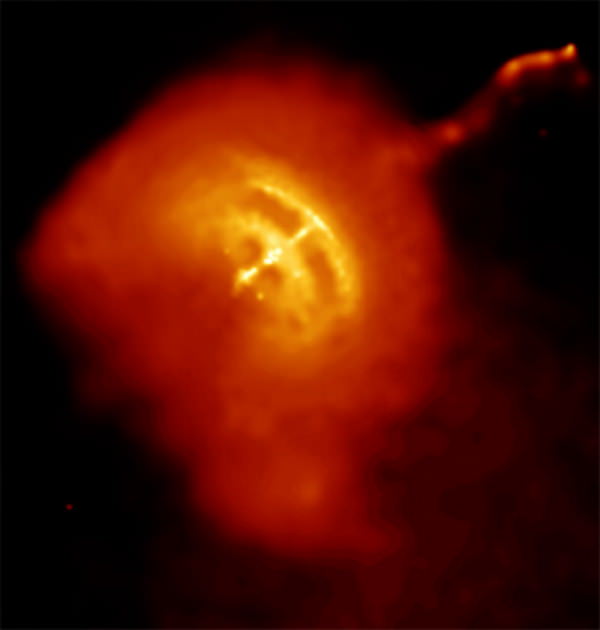Pulsars, the remnants of massive stars that have undergone supernova explosions, serve as fascinating celestial objects that illuminate numerous facets of astrophysics. These rapidly rotating neutron stars emit beams of electromagnetic radiation, sweeping through space like cosmic lighthouses. While pulsars are primarily known for their remarkable rotation rates and the coherent pulsations they produce, they also exhibit extraordinary magnetic characteristics that hint at their classification as giant neutromagnets. This article delves into the intricate interplay of pulsars’ magnetic fields, their formation, and their implications for our understanding of the universe.
The magnetic properties of pulsars are among their most striking features, surpassing those found on Earth by several orders of magnitude. A typical pulsar possesses a magnetic field strength ranging from (10^8) to (10^{15}) gauss, which is an astonishing comparison to the Earth’s magnetic field, typically around 0.5 gauss. Such intense fields arise from the unique circumstances surrounding the collapse of a massive star. When a star depletes its nuclear fuel, it undergoes a gravitational collapse, which leads to the formation of a neutron star. During this process, conservation of angular momentum causes the neutron star to rotate rapidly, while the intense gravitational forces compress the material, amplifying the existing magnetic field structured around the progenitor star into a more concentrated and potent form.
The underlying mechanisms responsible for pulsar magnetism are a topic of considerable interest. Neutron stars develop strong dipolar magnetic fields that can be understood through the framework of magnetohydrodynamics (MHD). The dynamics of a pulsar’s interior involve complicated interactions among neutrons, protons, and electrons. It is hypothesized that superconducting protons and the interactions with ultra-dense matter generate the stellar magnetic field. As charged particles move within the neutron star, they navigate through the intense gravitational field and interact with one another, contributing to magnetic field generation through dynamo processes. Notably, pulsars’ significant magnetic moments lead to extraordinary deviations in their rotational dynamics, primarily in the form of torque associated with their interaction with surrounding plasma and magnetic fields.
Interestingly, pulsars are often detected by their highly regular timing of emitted radiation, which is a consequence of their stable rotational periods. The pronounced stability of these pulsations underscores their capacity to function much like atomic clocks, allowing meticulous measurements of time intervals across astronomical distances. Many pulsars adhere to remarkably precise periodicity, with some exhibiting rotational stability on par with terrestrial atomic time standards. This quality opens avenues for utilizing pulsars in fundamental physics research, including tests of general relativity and the detection of gravitational waves through timing variations.
Moreover, the examination of pulsar emission provides critical insights into high-energy astrophysics. Pulsars emit broad-spectrum radiation, ranging from radio waves to gamma rays, contingent on their rotation and magnetic fields. The primary mechanisms for this radiation generation are both thermal emissions from the neutron star’s surface and non-thermal emissions resulting from particle acceleration in the magnetosphere. The regions near the magnetic poles, where the magnetic field lines diverge, are particularly conducive to particle acceleration. Electromagnetic interaction leads to the production of radiation in a range of observational wavelengths, revealing the complex interplay between magnetic fields and particle dynamics.
Additionally, the study of pulsars reveals their potential as valuable tools in probing the interstellar medium. As pulsar signals traverse the vast expanses of space, they are subject to scattering, dispersion, and extinction caused by intervening matter. Variations in the arrival times of pulsar signals, corresponding to changes in the electron density of the interstellar medium, yield critical data regarding the distribution of ionized gas and turbulence within our galaxy. This line of inquiry not only enhances our understanding of pulsar magnetism but also contributes to broader knowledge of the interstellar environment.
The fascination surrounding pulsars is multifaceted, extending beyond their mesmerizing emissions. Their extreme physical conditions provide a natural laboratory for the study of fundamental physics. Scientists have postulated various models to explain phenomena observed in pulsar behavior, such as glitches—sudden changes in the rotation rate attributed to internal structural adjustments as the neutron star transitions between states. The exploration of these glitches presents opportunities to probe the superfluid state of neutron matter and the intricate dynamics governing the pulsar’s internal structure.
The quest to understand pulsars requires interdisciplinary engagement, drawing from fields such as condensed matter physics, astrophysics, and cosmology. As advanced observational technology continues to refine our capacity to detect and characterize pulsars across various wavelengths, opportunities for new discoveries expand. Future endeavors may elucidate anomalous pulsar types, such as magnetars, which exhibit exceptionally strong magnetic fields and display diverse and violent behaviors, including bursting and flaring, that challenge existing theoretical frameworks.
In summary, pulsars emerge as not only celestial phenomena of staggering complexity but also embody the quintessential cosmic enigmas—a duality where intense magnetism and rapid rotation intertwine. Their study transcends mere fascination; it challenges our inherent understanding of the natural laws governing our universe. Pulsars serve as guardians of the galactic mysteries, illuminating the enigmatic realms of neutron stars and magnetic field generation, thereby advancing the frontiers of astrophysical knowledge.










